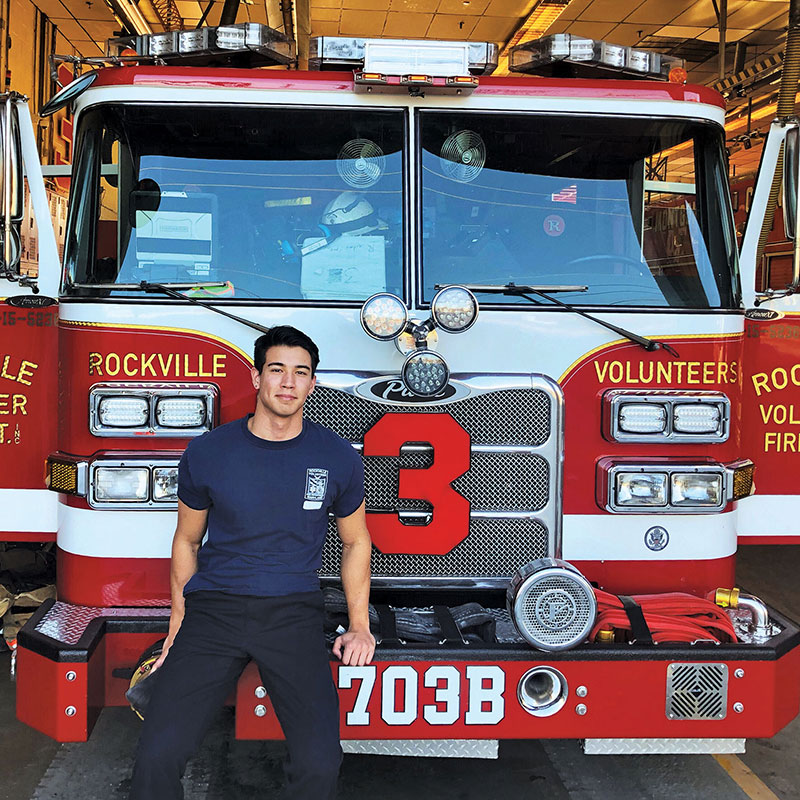
On a real fire call, I draw on everything I’ve learned in my major, from how fires behave to how buildings burn.
Not a day goes by when volunteer firefighter Christopher Hallock doesn’t use what he’s learned as a student in the Department of Fire Protection Engineering (FPE) at the A. James Clark School of Engineering.
“There’s a lot of knowledge sharing between work and school,” Hallock says. On a nuisance call or false alarm, the firefighter is able to quickly mitigate issues in fire alarm and suppression systems. “On a real fire call,” he says, “I draw on everything I’ve learned in my major, from how fires behave to how buildings burn.”
Likewise, the senior draws on his five-and-a-half years of service as a firefighter to excel in his courses and internship with Jensen Hughes, a fire protection engineering and consulting firm. In addition to hands-on experience with fire safety apparatus and systems, being a firefighter means Hallock comes into close contact with the human side of fire safety.
“Usually engineering is all about the math,” he says. “In fire protection engineering, you have to focus on the human element, as well.”
With his parents’ support, the community-minded high schooler applied to volunteer at his local fire station as early as he could—on his 16th birthday. Hallock has served the Rockville Volunteer Fire Department in Rockville, Maryland, ever since, working his way up from a probationary member to the rank of Master Firefighter. For the last two years, he has lived at the station along with three other volunteer firefighters.
When another firefighter suggested Hallock check out the FPE program at the Clark School, Hallock applied, was accepted, and received scholarships for his service to his community. The biggest challenge Hallock has had to overcome as a Maryland student, intern, and firefighter is finding time for it all.
“Every hour of my day is spent in class, at work, on firetrucks, or sleeping. I owe my mom some time,” Hallock says. She might see it soon.
Upon graduation in the spring, Hallock will transition from intern to consultant with Jensen Hughes and plans eventually to get his Professional Engineer license. He also plans to work toward a Masters of Engineering degree in fire protection engineering from Maryland. He credits the FPE program for providing a tightknit network where students are guided by well-connected faculty who care about the careers and lives of tomorrow’s FPE professionals.
As for live-in firefighting, Hallock has no plans to retire any time soon.
“I’ve been blessed with good health, and opportunity given to me by my parents,” he says. He feels fortunate to be able to give back to the community he loves while achieving his near-term academic and career goals.
“Having all these things work together is something I don’t take for granted.”
Top